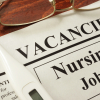- Featured
- News and Events
- Legal
- Career Trends
- Technology
- Training
- Procedures
- Nursing
- Advanced Practice
- How To
- Candidate News
- Employer News
- Nurse Practitioners
- Registered Nurses
- Telehealth
Recent Posts
Most Popular
The Nursing Shortage – Are Patient’s At Risk?

The nursing shortage is a constant concern for the nursing profession and patient safety.
The demands placed on nurses increases year after year because people are living longer and suffering from chronic conditions. Many patients wait too long to go to a primary doctor and end up in the hospital. Another example of the increased complexities nurses face is related to the misuse and abuse of opioids. Addiction is a nationwide epidemic that is requiring nurses in every specialty to care for this unique patient population.
Bradley University estimates that by 2024, 3.2 million nurses will be needed in the U.S. Compare this to the 2.75 million registered nurses (RN’s) in the country in 2016, and you can see the dilemma. Another factor contributing to the shortage is the high turnover seen in the nursing industry.
The Statistics Prove It
More than 75% of RN’s believe the nursing shortage presents a significant problem for the quality of their work life, the quality of patient care, and the amount of time they can spend with patients. The survey also showed that 98% of nurses believe a staffing shortage is stressful on bedside clinicians, lowers quality of care (93%), and causes nurses to leave the profession (93%). Surveys have also shown that hospitals with lower nursing staff levels also have higher rates of poor patient outcomes.
What Happens In a Nursing Shortage?
The effects of a nursing shortage are many. Here are a few of the most commonly impacted factors of nursing care.
Increase in Professional Stress
The statistics are alarming. If a nursing unit does not staff enough nurses, patients suffer from low-quality care. Nurses are given more tasks to perform, along with charting that requires them to be away from the bedside. The government and hospitals establish regulations that increase charting time, and many nurses feel overwhelmed. All of these factors lead to large numbers of nurses feeling dissatisfied with their job, ultimately leaving the profession for less stress and improved work-life balance.
Poor Patient Outcomes and Experience
One critical effect of poor staffing is an increase in medication administration errors. A JCAHO survey described the evaluation of 1,609 hospitals following reports of patient death and injury. Poor nursing staff levels were cited 24% of the time as the number one contributing factor.
If you’ve been in the profession any length of time, you know that nursing is changing. Patient care is no longer at the center of a nurse’s job, as the trend turns to more hands-off care. It’s impossible for nurses to keep up with charting and provide the attention that patients deserve. Nurses are pulled in several directions, working on their feet with no breaks day after day.
How to Change the Shortage
The rising costs of healthcare are damaging the nursing profession. Nurses are paid well enough to make a living, but a nurse will never be rich working in the hospital. Nurses are overworked and underpaid. Why do they keep doing it? Nursing is a calling.
Nurses that enjoy caring for patients won’t stop, even if their bodies suffer from the stressful work. It’s the job of nurses to protect patients and be an advocate. Therefore, nurses must be advocates for safe nurse-to-patient ratios. The status of our healthcare system won’t change unless everyone comes together to create the change.
Get Involved
How can you get involved? Become an advocate in your community and state. You can visit – https://nurse.org/articles/federal-staffing-ratios/ – if you want to be part of the change. California is currently the only state that has mandated nursing staff ratios. Nurse-to-patient ratios must change for nurses and patients to be safe and happy. Get involved to be part of the change for nurses nationwide.








Comments